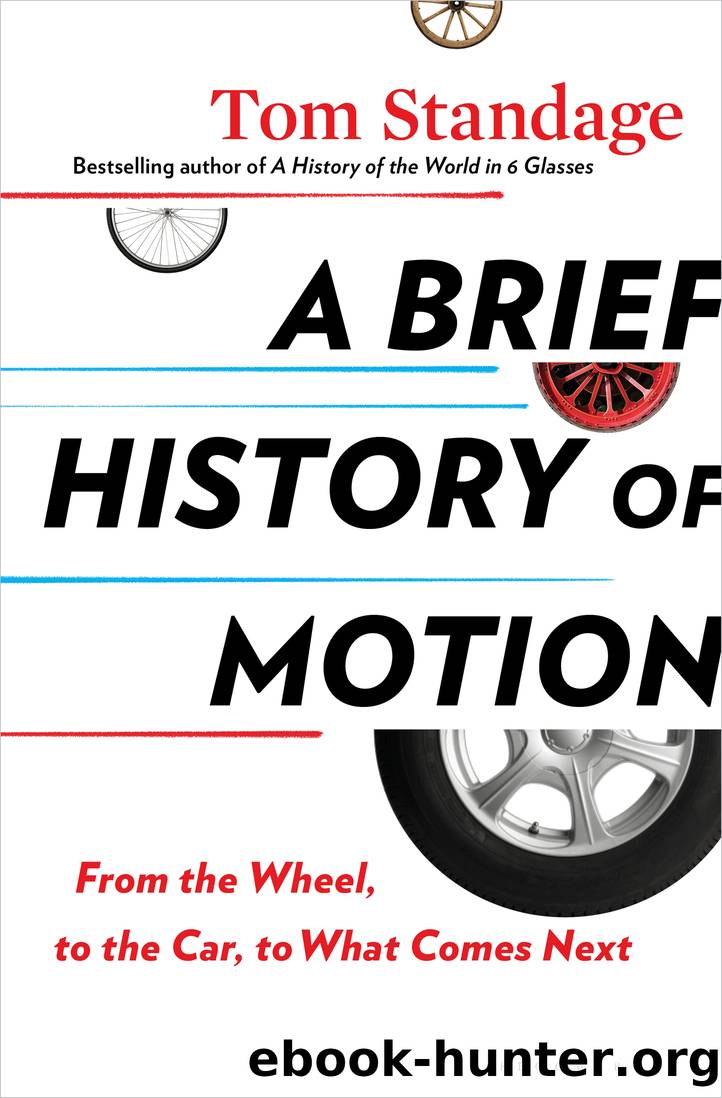A Brief History of Motion by Tom Standage

Author:Tom Standage
Language: eng
Format: epub
Publisher: Bloomsbury Publishing
8
Car Culture
The car has become an article of dress without which we feel uncertain, unclad and incomplete in the urban compound.
âMARSHALL MCLUHAN, UNDERSTANDING MEDIA, 1964
THE INVENTION OF THE TEENAGER
In December 1944 Life magazine introduced its millions of American readers to the customs and culture of a group of exotic creatures, under the headline âTeen-age Girls: They Live in a Wonderful World of Their Own.â The word teen-age had been around for a few decades. But it caught on in America in the 1940s because it referred to a cohort of young people who were seen, for the first time, as a distinct age group between childhood and adulthood. American teenagers of the 1940s were the first generation to grow up in a world where cars were commonplace; they never experienced a world without them. The cultural tropes that emerged in the 1940s and 1950s, as cars changed the way people socialized, ate, and shopped, went on to spread around the world, reshaping Western popular culture.
The emergence of teenagers was the result of the confluence of three factors. The first was that in America, unlike in other rich countries, sixteen-year-olds were more likely to be in school than employed, thanks to Depression-era laws barring young people from jobs that could be done by adult men. The proportion of American teens attending high school had risen from about 50 percent in 1930 to 70 percent in 1940 and reached 90 percent by 1960. Because teenagers spent most of their day in one anotherâs company at school or in school athletics or other extracurricular activities, they developed their own social rules distinct from those of the home or workplace. Second, labor shortages during the Second World War, and an economic boom after it, ensured that after-school jobs were plentifulâand teenagers in the 1940s were generally allowed by their parents to keep their earnings. This gave them significant spending power.
The third factor was the car. The minimum driving age in most American states was sixteen, and secondhand vehicles were cheap and readily available. The importance of cars in the emergence of teenage culture is evident from Lifeâs 1944 photo story. The lead image is of a group of teenagers gathered around a 1927 Ford Model T. The caption reads, âGang of teen-agers push boyfriendâs Model T to get it started. Car is 17 years old and can hold 12 boys and girls. Favorite ride is out to football game.â That brief caption evokes the whole universe of American teen culture in its classic form: hanging out with friends, cruising in cars, footballers and cheerleaders, school proms, and so forth. American teenagers had the freedom and space to develop a distinctive set of behaviors that subsequently became a potent cultural export. Cars were central to this new teenage culture because they provided independence from parents and a private space beyond their prying eyes.
In particular, cars accelerated a change in the nature of courtship that had been under way since the 1920s. The tradition, in middle-class
Download
This site does not store any files on its server. We only index and link to content provided by other sites. Please contact the content providers to delete copyright contents if any and email us, we'll remove relevant links or contents immediately.
| Africa | Americas |
| Arctic & Antarctica | Asia |
| Australia & Oceania | Europe |
| Middle East | Russia |
| United States | World |
| Ancient Civilizations | Military |
| Historical Study & Educational Resources |
The Dawn of Everything by David Graeber & David Wengrow(1567)
The Bomber Mafia by Malcolm Gladwell(1519)
Facing the Mountain by Daniel James Brown(1428)
Submerged Prehistory by Benjamin Jonathan; & Clive Bonsall & Catriona Pickard & Anders Fischer(1375)
Tip Top by Bill James(1291)
Wandering in Strange Lands by Morgan Jerkins(1281)
Evil Geniuses: The Unmaking of America: A Recent History by Kurt Andersen(1269)
Red Roulette : An Insider's Story of Wealth, Power, Corruption, and Vengeance in Today's China (9781982156176) by Shum Desmond(1267)
The Way of Fire and Ice: The Living Tradition of Norse Paganism by Ryan Smith(1258)
Driving While Brown: Sheriff Joe Arpaio Versus the Latino Resistance by Terry Greene Sterling & Jude Joffe-Block(1230)
American Kompromat by Craig Unger(1213)
F*cking History by The Captain(1196)
It Was All a Lie by Stuart Stevens;(1191)
American Dreams by Unknown(1153)
Treasure Islands: Tax Havens and the Men who Stole the World by Nicholas Shaxson(1151)
Evil Geniuses by Kurt Andersen(1142)
White House Inc. by Dan Alexander(1122)
The First Conspiracy by Brad Meltzer & Josh Mensch(1075)
The Fifteen Biggest Lies about the Economy: And Everything Else the Right Doesn't Want You to Know about Taxes, Jobs, and Corporate America by Joshua Holland(1029)
